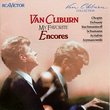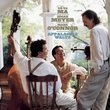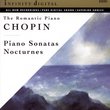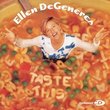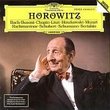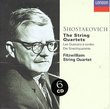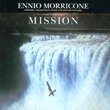| All Artists: Toscanini, NBC Title: Overtures & Preludes Members Wishing: 0 Total Copies: 0 Label: RCA Release Date: 9/15/1992 Genre: Classical Styles: Opera & Classical Vocal, Forms & Genres, Theatrical, Incidental & Program Music, Historical Periods, Classical (c.1770-1830), Symphonies Number of Discs: 1 SwapaCD Credits: 1 UPC: 090266031023 |
Search - Toscanini, NBC :: Overtures & Preludes
 | Toscanini, NBC Overtures & Preludes Genre: Classical
|
Larger Image |
CD DetailsSimilarly Requested CDs
|
CD ReviewsAn Amazing Collection of Unique Overture Performances! 11/16/1998 (4 out of 5 stars) "Only Toscanini at his most intense could inspire an orchestra to such an outpouring of passion as can be heard here in evergreens like the "William Tell" overture, the Verdi "Forza del Destino" overture, and Herold's "Zampa".Many of the recordings were re-done by Maestro in the early fifties: here the forties' 78s are included, though the earliest (William Tell, 1939) still sounds quite fine in the decent monaural transfers. These would not all be my favorites of the versions conducted by Maestro that have appeared on LP and CD: the "Mignon" of Thomas makes a greater impact in the high-fidelity recording of 1952, as does the "Freischuetz" Overture. The Kabalevsky "Colas Breugnon" Overture, recorded here on a 78 rpm disk in 1946, does not have the passion, panache, and lively spirit of a broadcast of that same year, available on Dell'Arte. And I take issue with the inclusion of a rather scrappy, poorly played, and scratchy transcription disk from 1946 of the Smetana "Bartered Bride" Overture; an earlier NBC concert performance from 1939 (about to be issued by Naxos but not in the U. S.) has better sound and cleaner playing. One wonders why the Maestro approved this later and inferior performance. However, the spectacular recording of the 1952 "Zampa" has never sounded better! It is nearly the equal of any recording made that year, by any record company! So much for the canard that "Toscanini records always sounded bad!" Nothing could be further from the truth!" Interesting Overtures Robert E. Nylund | Ft. Wayne, Indiana United States | 01/31/2006 (4 out of 5 stars) "This RCA Victor compilation is indeed quite interesting. While it includes some familiar recordings that had been included on various RCA LPs, including the Victrola series in the late 1960s, there are a few recordings that had previously only been available on the original 78-rpm issues. Generally, the performances are all top-notch.
Anyone who has listened to recordings of Toscanini's rehearsals (let alone witnessed them) can attest to how hard he worked even on shorter workers. A particularly good example is Naxos' release of the rehearsal of Debussy's rarely heard "Scottish March" from 1940; Toscanini spent a great deal of time on refining the NBC Symphony's performance, possibly because the work was less familiar to the musicians. Relatively few people have ever heard that remarkable, delightful work; however, it is treated with great precision in Toscanini's hands. Conductor Charles Gerhardt, who was present at many Toscanini performances and recording sessions, cited the Maestro's performance of the overture to Herold's "Zampa." This is a frequently performed work, even if the opera itself is largely neglected. Toscanini managed to bring out the most exciting, lively, and brilliant playing from the NBC musicians in this 1952 "studio" recording from Carnegie Hall. It is a good example of how Toscanini strived for the best in ALL of the music he conducted. The overture to Humperdinck's "Hansel und Gretel," also taken from a 1952 recording session in Carngie Hall, is another treasure. This music, too, is quite familiar and is given a fresh approach in Toscanini's hands. He truly brings out the Wagnerian influences in the music so that the spectacular use of brass is magnificent. The softer, tender passages, including the famous prayer, are handled with great sensitivity. The first time I heard Toscanini's recording of Dmitri Kabalevsky's overture to his opera "Colas Breugnon," I was absolutely amazed. This is very challenging music; it requires great precision and energy from the musicians and, fortunately, Toscanini succeeded remarkably. The music is extremely syncopated, too. This piece was frequently played on his 1950 American tour with the NBC Symphony and was undoubtedly a delight for all who heard it. The broadcast concert performance of the overture to Mozart's final opera, "The Magic Flute," is especially wonderful. It is a good demonstration of Toscanini's great love for the music of Mozart. There is an energy and enthusiasm that one rarely hears in this very familiar music. It is one of the better-sounding recordings taken from a broadcast in Studio 8-H. Toscanini's 1953 recording of the famed overture to Rossini's "William Tell" became the gold standard for all conductors and orchestras who played it. Certainly Toscanini recognized that many associated the finale with "The Lone Ranger" on radio and television. (One reads of Toscanini's delight in sitting close to his television set and marveling at the early programs he watched with family and friends. He would shout "look!" whenever something caught his attention.) However, RCA included his 1939 Studio 8-H broadcast on this disc; as with many of his earlier recordings, this one truly excels with the precise, exciting playing of the storm and the chase music, while the introduction and the calm after the storm are again played with incredible sensitivity. Smetana's "The Bartered Bride" is best known for its overture and dances. Toscanini's performance is particularly showy and delightful. There is a relentless energy in this performance. The recording of Thomas' overture to "Mignon" originally appeared on a single 12-inch 78-rpm disc. It was recorded in Carnegie Hall, since producer Charles O'Connell felt it was a better venue for commercial recordings than Studio 8-H. The overture is a medley of familiar tunes from the opera, including the particularly difficult soprano solo. The NBC strings especially excel in this recording. There are several recordings of the overture to Verdi's "La Forza Del Destino," including the OWI film that Toscanini made with the NBC Symphony in Studio 8-H in 1943 (one of the rare opportunities to SEE Toscanini conducting). This version, which was originally issued on a 78-rpm disc, is one of the best. There is more energy and excitement than in the later recording that was first issued on LPs. Finally, there is a vibrant performance of the overture to "Der Freischutz." Although the sound is not up to the more familiar 1952 recording, this is certainly a very fine rendition. It is yet another chance to hear the NBC strings at their best. One person who had attended NBC broadcast concerts said that Toscanini, who had been a cellist, was especially good in building a strong string section and this is quite true. The wind section also excels in this recording. " |

 Track Listings (9) - Disc #1
Track Listings (9) - Disc #1